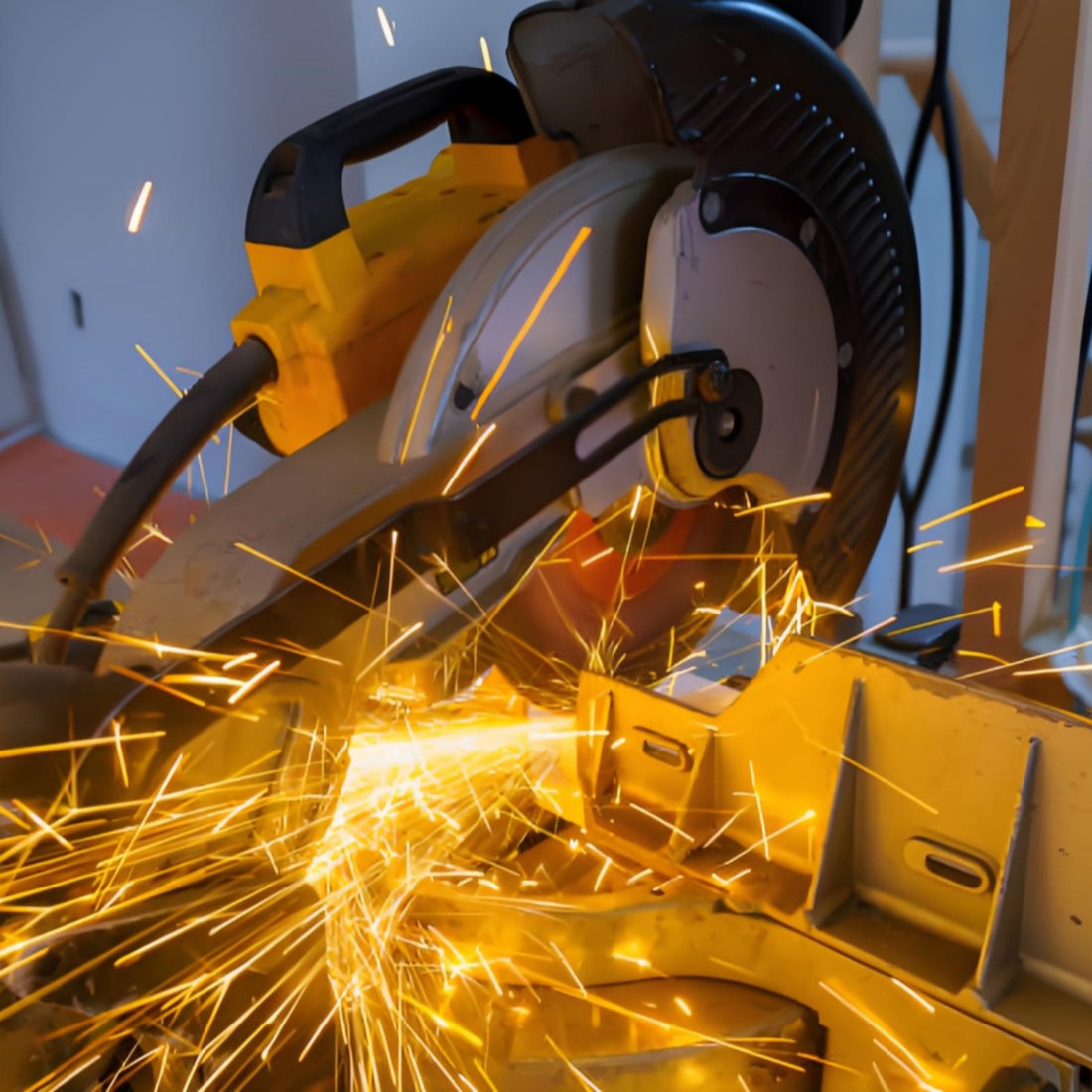1. Basic composition of cutting discs
Cutting discs are generally composed of three parts: abrasive, binder and backing material. The combination of different materials determines the performance and scope of application of the cutting disc.1.1.Abrasive
Abrasive is the key component of the cutting disc, and it directly determines the cutting efficiency and effect. Common abrasives include:- Aluminum Oxide (Al₂O₃): Suitable for cutting carbon steel and alloy steel.
- Silicon Carbide (SiC): Suitable for cutting cast iron, aluminum, copper, brass and other non-ferrous metals, as well as hard and semi-hard materials.
- Zirconium Oxide (ZrO₂): Suitable for cutting stainless steel, high alloy steel and armor steel.
- Ceramic Abrasive: Has extremely high wear resistance, suitable for high precision cutting.
The following table compares the characteristics of some common abrasives:
| Abrasive Type | Suitable material | Hardness | Cutting speed | Wear resistance | Price |
| Aluminum oxide | Carbon steel, alloy steel | High | Average | Average | Low |
| Silicon carbide | Cast iron, aluminum, copper | High | High | Low | Half |
| Zirconium oxide | Stainless steel, high alloy steel | Very high | Average | High | High |
| Ceramic Abrasive | High precision materials |
Extremely high |
High | Extremely high | Very high |
1.2 Binder
The binder is used to bind the abrasive particles together and form the overall structure of the cutting disc. Common binders include:- Resin: It has certain elasticity and heat resistance, suitable for high-speed cutting.
- Metal: Provides greater strength and rigidity, suitable for heavy cutting.
- Ceramic: High temperature resistant, suitable for high precision and high strength cutting.
1.3 Reinforcement material
Reinforcement material is used to improve the strength and durability of the cutting disc. Common reinforcement materials include fiberglass and wire mesh.2. Different types of cutting discs
Depending on the use and material, cutting discs can be classified into several types. Some common types of cutting discs and their characteristics are described below:2.1 Cutting disc for steel
Suitable for cutting carbon steel, alloy steel and stainless steel, generally using aluminum oxide or zirconium oxide as abrasive, resin as binder and glass fiber as reinforcing material. This kind of cutting disc has high hardness and wear resistance, and the cutting speed is fast.

2.2 Cutting disc for non-ferrous metals
Suitable for cutting aluminum, copper, brass and other non-ferrous metals, generally using silicon carbide as abrasive and resin as binder. The high hardness and high cutting speed of silicon carbide make it excellent for cutting non-ferrous metals.2.3 Precision cutting disc
Suitable for high-precision and heavy-duty cutting work, it generally uses ceramic abrasive and metal binder. The extreme hardness and wear resistance of ceramic abrasive make it outstanding in precision cutting.The following table summarizes the characteristics of different types of cutting discs:
| Guy | Suitable material | Abrasive | Binder | Reinforcement material | Characteristics |
| Disc for steel | Carbon steel, alloy steel, stainless steel | Aluminum oxide, zirconium oxide | Resin | Fiberglass | High hardness, wear resistance, fast cutting |
| Disc for non-ferrous metals | Aluminum, copper, brass | Silicon carbide | Resin | None | High hardness, fast cutting speed |
| Precision disc | High precision and high strength cuts | Ceramic Abrasive | Metal | Wire mesh | Extremely high hardness, wear resistance, high precision |
3. Manufacturing process of cutting discs
Cutting wheel manufacturing involves several steps, including abrasive selection, mixing, molding and sintering. Each step requires precise control to ensure the quality and performance of the final product.3.1 Abrasive selection and mixing
Select the appropriate abrasive according to the use of the cutting disc, and mix it in an appropriate proportion with the binder and the reinforcing material.3.2 Molding and pressing
Place the mixed materials into a mold and press them under high pressure to give a preliminary shape to the cutting disc.3.3 Sintering and post-treatment
Sinter the molded cutting disc at high temperature to make the binder and reinforcing material firmly bonded, improving the strength and durability of the cutting disc. Finally, perform necessary post-sintering treatments, such as grinding and adjusting, to ensure the accuracy of the size and shape of the cutting disc.4. Performance testing and quality control of cutting discs
Before leaving the factory, cutting discs must undergo strict performance and quality control tests, including hardness, cutting speed, wear resistance and safety tests. These tests ensure the reliability and stability of the cutting discs in actual use.

5. Market selection and recommendations
When choosing cutting discs, consumers should consider the following factors:- Material: Select the appropriate abrasive and binder according to the material to be cut.
- Brand: Choose reputable brands and suppliers to ensure product quality and after-sales service.
- Certification: Check whether the product has passed relevant industry certifications, such as ISO, ANSI, etc.

